Philips PML 9009 is the manufacturer's top LCD television, using Mini LED backlighting. The device itself boasts excellent build quality, a stylish remote control, and the manufacturer's exclusive multicoloured Ambilight backlighting. In terms of picture quality, a slight drawback can be noted with the blacks and contrast, which, to be frank, are not among the best and will not deliver as deep and vibrant an image as is found in televisions in a similar price range. However, it is worth noting that due to good algorithms responsible for the picture, its tonal quality was very satisfying. Therefore, the relatively low brightness of the display is well masked here, and with the implementation of Dolby Vision technology, it allows for access to HDR materials. What definitely deserves attention is the fluidity of transitions, which were quite outstanding and better than in some significantly more expensive units. The greatest advantage of this television is its performance in gaming. No negative remarks can be made in this aspect, as the television truly shines and will certainly satisfy any user. The motion smoothing system is also one of the aspects worth praising the television for. With two sliders, whose effects are perceptible at every position, each user can find the best level of smoothing for themselves. Therefore, it can confidently be said that when choosing a television for sports, PML9009 Philips can be identified as an excellent candidate. Although the TitanOS operating system is currently in the development phase and lacks a considerable number of applications, we do not believe that the manufacturer will do nothing in this regard.
- Matching (Score)
- Our verdict
- TV appearance
- Where to buy
- Contrast and black detail
- HDR effect quality
- Factory color reproduction
- Color reproduction after calibration
- Smoothness of tonal transitions
- Image scaling and smoothness of tonal transitions
- Blur and motion smoothness
- Console compatibility and gaming features
- Input lag
- Compatibility with PC
- Viewing angles
- TV efficiency during daytime
- Details about the matrix
- TV features
- Apps
- Playing files from USB
- Sound
Philips PML9009 / 9019 / 9059 vs TCL C7K / QM7K
Direct compare
The Xtra / PML9019 / PML9059 / PML9009 / PML9049 / AMBILIGHT TV
C7K / Q7C / MQLED85K / C79K / C71K / QM7K

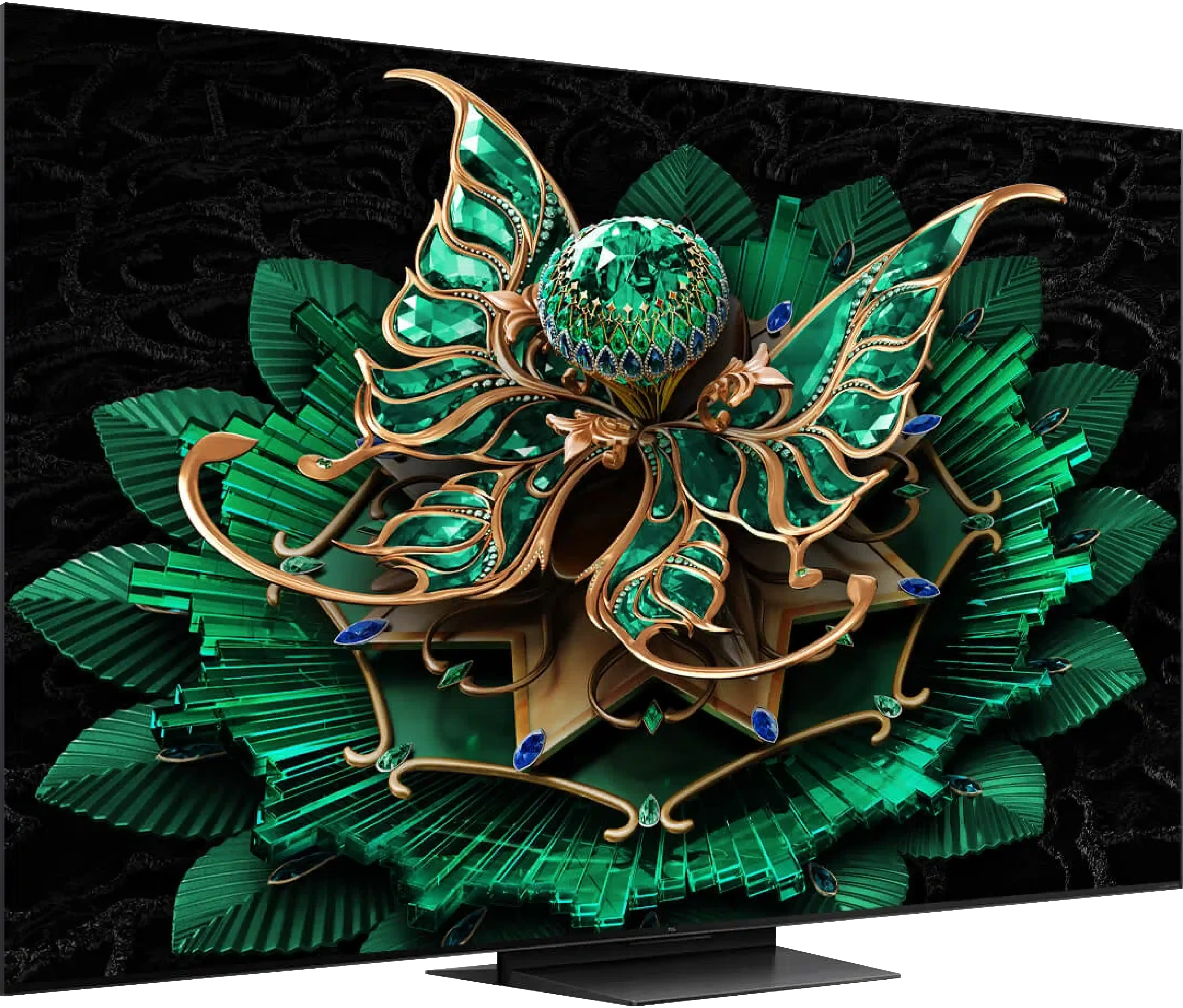
Panel type: LCD VA
Resolution: 3840x2160
System: Titan OS
Model year: 2024
Complete the survey to find out the result

Panel type: LCD VA
Resolution: 3840x2160
System: Google TV
Model year: 2025
Complete the survey to find out the result

Overall rating
6.8
7.1
Movies and series in UHD quality
6.5
6.7
Classic TV, YouTube
6.3
6.5
Sports broadcasts (TV and apps)
6.6
6.4
Gaming on console
8.5
8.5
TV as a computer monitor
8.6
8.4
Watching in bright light
6.1
6.1
Utility functions
6.0
7.7
Apps
6.2
9.6
Sound quality
6.7
7.0
Complete the survey to find out what fits your preferences
Advantages
Very good tonal range of scenes exceeding the capabilities of the television
Well-functioning dynamic tone mapping feature
Colour reproduction after calibration
Performance after connecting to a console/PC
Very good black - VA panel with a large number of Mini-LED zones
High brightness in HDR - over 1000 nits
Excellent for gamers - HDMI 2.1, low input lag, VRR, ALLM, etc.
Good motion smoothness - 144Hz panel
Supports multiple HDR formats: HDR10, HDR10+, Dolby Vision
Google TV operating system with access to a vast array of applications
Pleasant sound from built-in speakers
Disadvantages
Considerable halo/bloom effect
Poor viewing angles
The TitanOs system is not as advanced as the competition
Average contrast and black levels
Google TV can operate with minor stutters
No USB recording and PiP functionality
Our verdict
There are televisions that come for testing, and you immediately think: “oh, just another average one, probably like many others.” And basically… that’s true. The TCL C7K doesn’t try to dethrone OLEDs, nor does it shout from the box “revolution!” Yet, after a few days of testing, it’s hard not to think: “wow, this is really good equipment.” And that’s exactly what the C7K is. The biggest asset of the C7K is its decent picture at a reasonable price – MiniLED and quantum dots do their job here. The colours are vibrant, the brightness satisfactory, the contrast impressive, and with the right settings, you can truly enjoy viewing in the best quality. The second strong point is the smoothness of motion – both in sports and games. Support for HDMI 2.1, variable refresh rates, 144 Hz, and a whole host of other features make gaming on this TV a pure joy. Then there’s Google TV, which – despite some minor shortcomings – provides access to nearly an endless library of applications. Voice control, quick access to YouTube, Netflix, AirPlay support – it has everything you need for everyday use. Are there downsides? Of course. The Google TV system can have moments of “hesitation,” and MiniLED – being MiniLED – can stumble on very complex film scenes. But these are details. After all, the C7K is a mid-range model – and in this class, it performs simply excellently. So if you are looking for a reasonably priced, modern television with Google TV that looks good, works well, and plays quite decently without ruining your budget – the TCL C7K definitely deserves your attention.
TV appearance





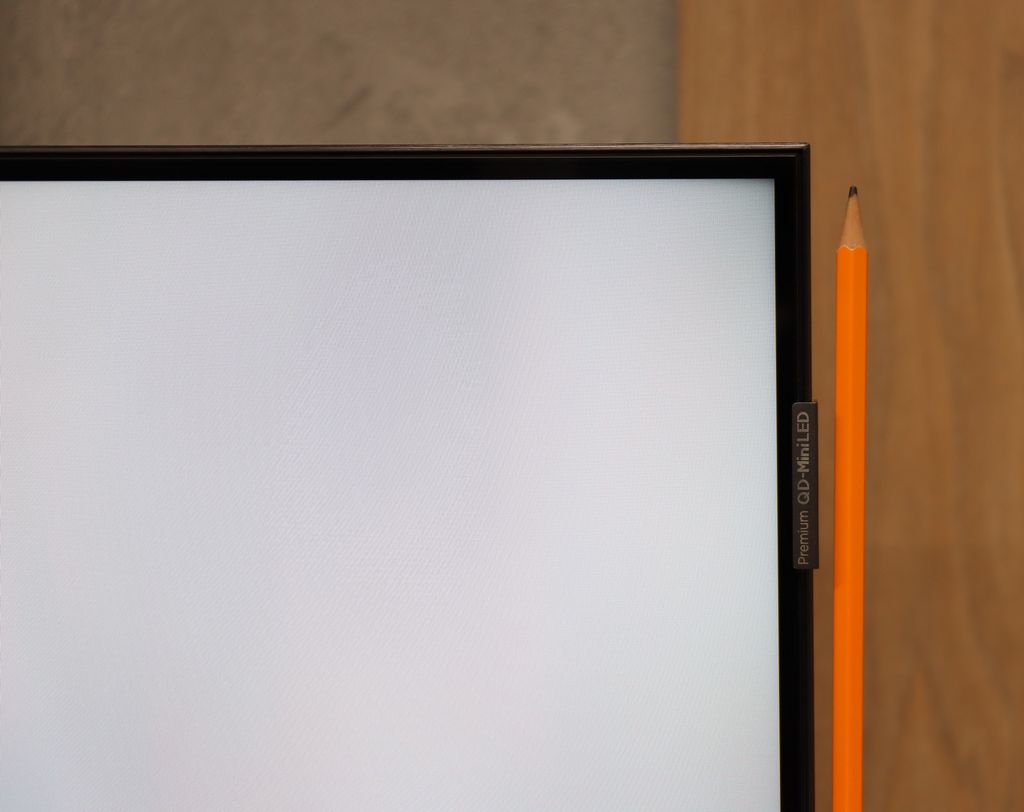
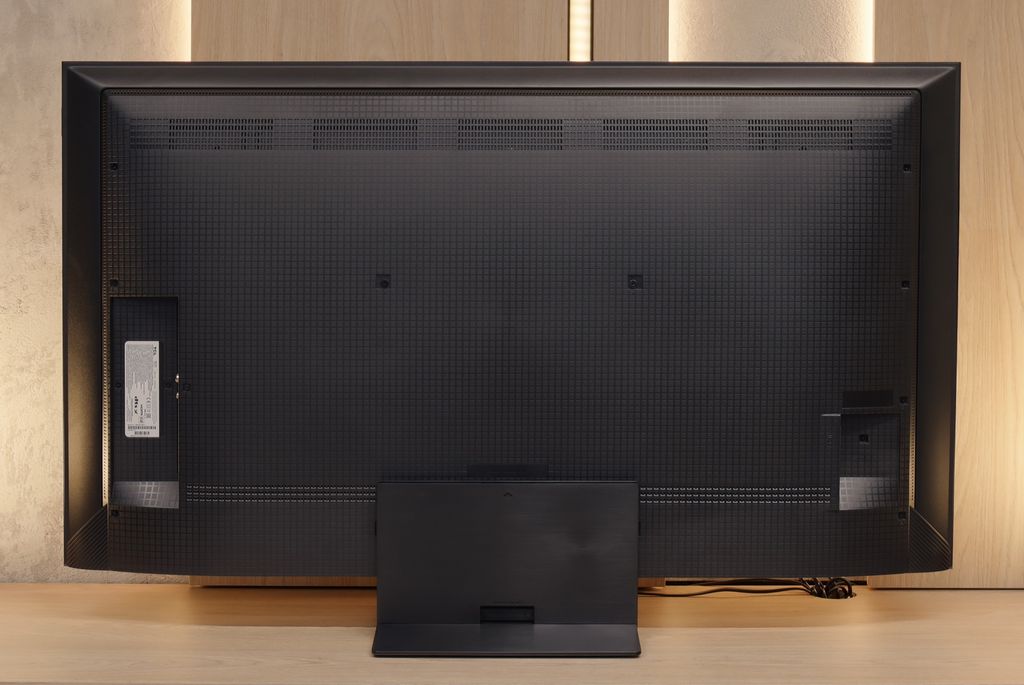
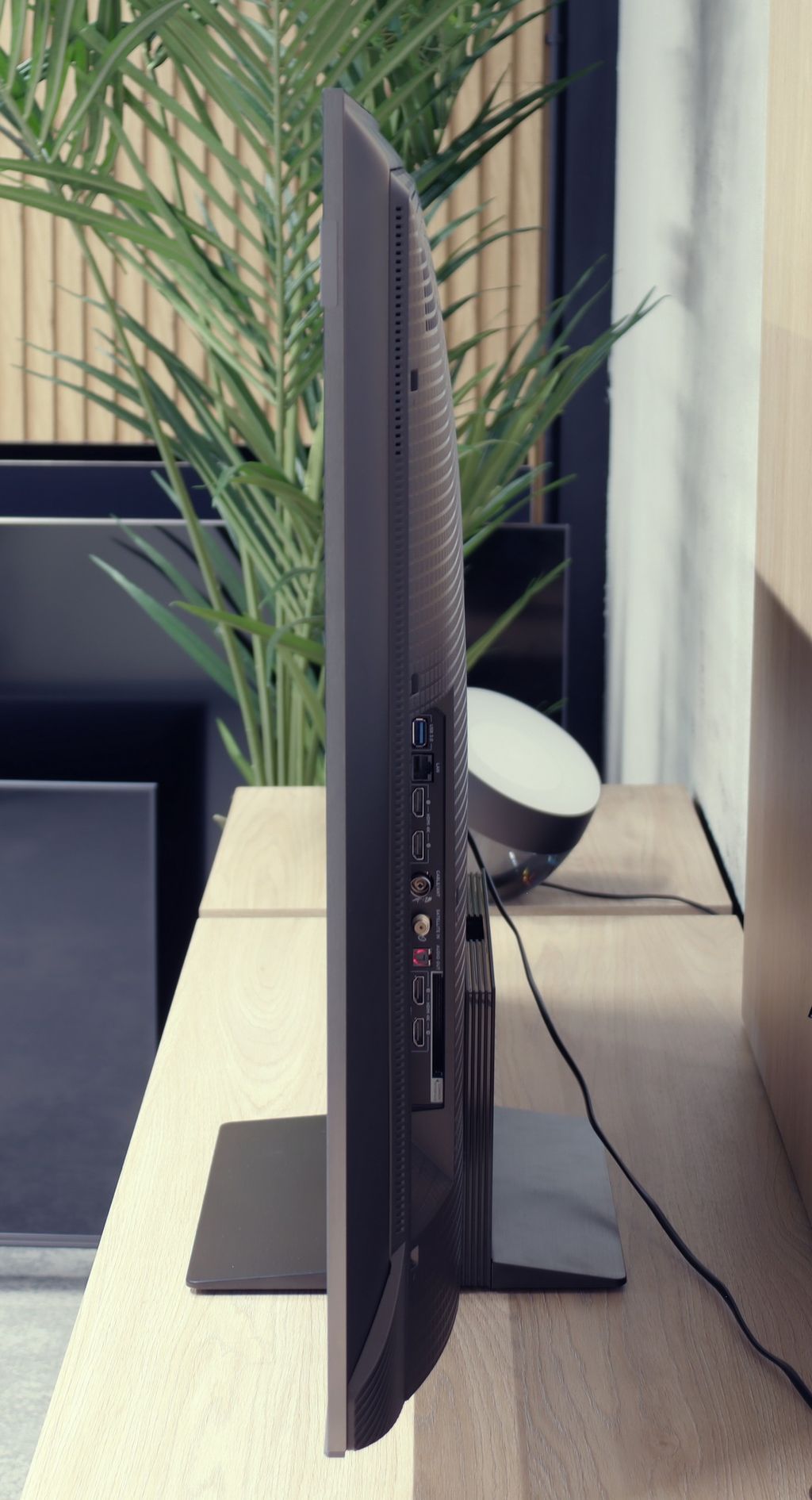
Contrast and black detail
6.6/10
7.1/10
Local dimming function: Yes, number of zones: 75 (15 x 5)
Local dimming function: Yes, number of zones: 336 (14 x 24)
Contrast:

Result
132,000:1

Result
16,550:1

Result
14,450:1

Result
7,850:1

Result
6,650:1

Result
161,000:1

Result
18,750:1

Result
13,150:1

Result
6,300:1

Result
4,200:1
Halo effect and black detail visibility:

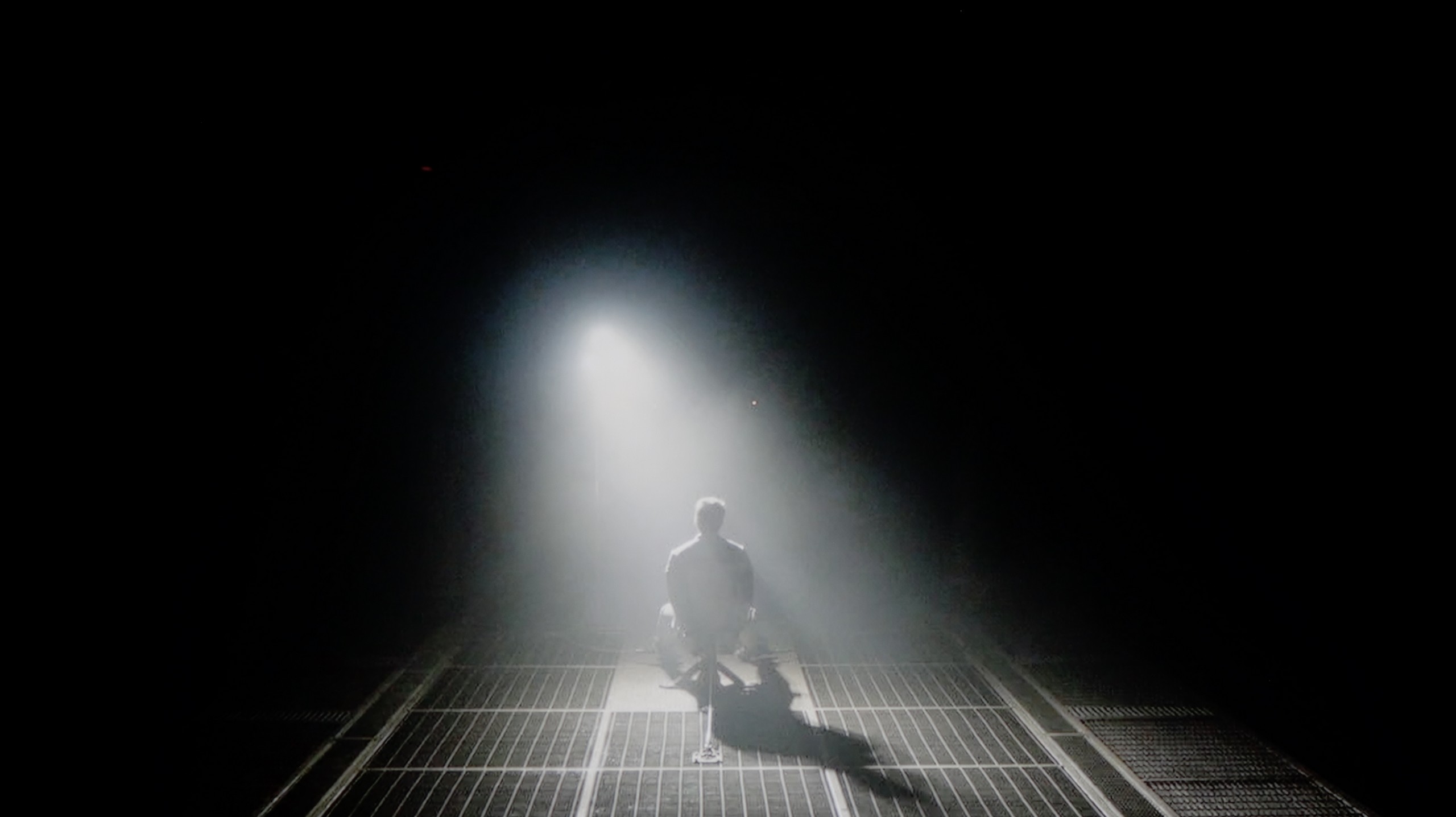
Philips PML9009 is equipped with a high-contrast VA panel. Although it does not deliver as deep and three-dimensional an image as OLED televisions, it is still a much better solution for home cinema compared to IPS/ADS panels. The measured static contrast (without local dimming activated), which stands at 6000:1, can be considered very good and allows for the full potential of the Mini LED backlighting that has been implemented in the tested television. The results of the contrast and black measurements, as you can see for yourselves, are not among the highest, and the only scene where the television demonstrated satisfactory results was that from the film "Oblivion," where the unit can be commended for its light separation, which is not so obvious even in much more expensive units. We should also mention that all tests were conducted at medium dimming power, as the lowest option produced unsatisfactory black levels, while the highest lost a significant amount of detail. Unfortunately, our standard testing procedure with the film "Sicario 2" did not go very well. Yes, all the details in the background are very well visible, but due to the operation of the dimming zones, the overall tone was significantly thrown off, not to mention the strong halo effect around the bright elements of the helicopter.
The 50-inch TCL C7K that we tested surprised us right from the start – it’s the smallest model in the series, yet it comes equipped with a VA panel with MiniLED backlighting and – attention – as many as 336 dimming zones. For comparison: many significantly larger televisions from higher tiers would be eager to boast such a number. Here we have it in the 50-inch version. Sounds promising, doesn’t it? So how does this translate into real movie-watching experiences? In the vast majority of tested scenes – very well. The contrast was high enough that it reached even six-digit values in measurements, which practically means very deep blacks and well-separated highlights. In scenes from films like The Revenant or Oblivion, the effect was impressive, matching the best LCD screens in this class.
However, not everything went perfectly. Despite the impressive number of zones, managing them was not always exemplary. In more complex scenes, where small light sources or a high level of detail appeared, the television had issues with the so-called halo effect (a glowing halo around bright objects) or overly aggressive dimming of the image. In such situations, contrast could either collapse due to overexposure of certain zones or, conversely – details in bright areas disappeared because the zones suppressed the light too much. Nonetheless, it is worth noting that in the vast majority of scenes, the contrast was more than satisfactory. And taking into account the size of the television and the price, the final effect will satisfy not just average users.
HDR effect quality
6.1/10
5.4/10
Luminance measurements in HDR:

Result
548 nit

Result
550 nit

Result
824 nit

Result
491 nit

Result
582 nit

Result
1051 nit

Result
185 nit

Result
454 nit

Result
200 nit

Result
836 nit
Scene from the movie “Pan” (about 2800 nits)


Scene from the movie “Billy Lynn” (about 1100 nits)


Static HDR10


Dynamic: Dolby Vision
Dynamic: Dolby Vision


HDR luminance chart:
TCL C7K / QM7K
Luminancja HDR
Luminance of RGB colors
Philips PML9009 / 9019 / 9059
Luminancja HDR
Luminance of RGB colors
Philips PML9009 does not really operate at the highest values in HDR content. Most effects with brightness at around 550 nits will not leave us thrilled with the lighting effects, although they are quite stable, which is a plus and will make a considerable difference compared to SDR content. It is worth noting that we can only achieve a good result in one scenario, namely in the film "Gemini", where the flashlight as the only light source can shine. Why in that scene specifically? The answer is quite simple. The scene itself does not contain a large amount of black, and the flashlight is not as large an object as the sun in the first and last scenes. Overall, the brightness measurement results in HDR content do not provide a basis for recommending this television for viewing productions that utilise a wide colour spectrum. Although it is worth noting that this model can cover it to a decent extent of 93% in the case of the DCI-P3 palette.
TCL C7K is one of the brightest MiniLED televisions in its price range. Under the best testing conditions, the screen managed to achieve over 1200 nits, resulting in impressive, at times almost blindingly bright scenes. And most importantly – this is not just a theory based on measurements. In practice, the brightest parts of films can shine with true cinematic grandeur. Fans of home HDR cinema should be truly satisfied.
The impression is excellent, especially in scenes with large areas of brightness – a white sky, explosions, sun reflections, or magical sunsets can surprise with an intensity of light that is rarely seen in this price range.
However, it gets a bit worse when more challenging scenarios appear on the screen, as described when discussing contrast – that is, images full of details, with small, bright elements on a dark background. In such cases, the C7K often decides to preserve black levels at the expense of brightness. An example? Scenes from the films Sicario 2 or Life of Pi, where small light sources (like a distant lantern) can become less visible, and details in the lights are simply dimmed or blend into the background.
For many viewers, this may be an acceptable compromise – as we achieve deep black levels and a pleasing plasticity of the image. Nevertheless, it is worth being aware that the visibility of small details in bright areas is not this model's strongest suit. It is simply a technological limitation that still exists – even with over 300 zones.
Factory color reproduction
5.3/10
6/10


Factory Mode
After calibration
The best factory mode used during our tests was "Filmmaker". Here, we will look at both SDR and HDR content. The element that distinguishes them is primarily the EOTF curve in materials with a wide colour gamut and the gamma in those recorded "the old way". Starting with SDR films and series and the most basic thing we can observe, which is white balance, we see a significant dominance of red colour. This led to a yellow tint across the entire image, causing unnaturally looking faces and yellowed whites. This flaw is also evident on the "ColourChecker" palette, where all colours have shifted towards their warmer counterparts. Looking at a more significant graph, that of the gamma responsible for image contrast, we see considerable errors starting from the very beginning. From the left, the value we measured, marked by a connected ellipsis, clearly spiked upwards, causing complete merging of details in the darkest scenes. This state of affairs remained until 10% screen brightness, after which it dipped below the reference orange line, leading to a deterioration in contrast, which, as we know, the Philips PML9009 already lacks. In HDR materials, the white balance issues were very similar to those in SDR content. The discrepancy arises when checking the EOTF curve, which controls the rate of brightness increase and severely limited it, causing the image to appear unnaturally dark. As for the colours themselves, there were more reasons for concern here, as the television's too low luminance caused a huge discrepancy between the actual state and the correct one, which is perfectly visible on the error graph, often exceeding the scale.
A new feature in TCL televisions for 2025 is the long-awaited Filmmaker mode, which until now has been found in most competing brands. This is great news, as this mode is considered to be the truest to the original vision of the creators and is often recommended by enthusiasts of good picture quality. Unfortunately, as is often the case, the mere presence of this mode does not guarantee perfection. The Filmmaker mode in the TCL C7K is not without its flaws. There can be criticism of the incorrect white balance, particularly a slight dominance of blue, which resulted in cool, somewhat greyish skin tones. But that was not the biggest issue. The main complaint was the excessive brightness exposure, which is clearly visible on the gamma and EOTF graphs. The image was simply too bright, at times even blown out, which affected not only the texture of scenes but also the overall viewing experience. Some details were simply lost, and the entire image looked as if someone had slightly overcooked the brightness slider. As always, we decided to check what could be extracted from this after calibration. And that’s where it started to get really interesting…
Color reproduction after calibration
7.5/10
7.5/10




Philips PML9009, like most leading manufacturers, has been offering advanced tools for the calibration process for years. Thus, we find 2- and 20-point greyscale adjustment as well as an advanced CMS (Colour Management System). The differences resulting from calibration are evident, and even someone not paying attention to picture quality (although there probably aren't many such here) will notice a positive difference. Both SDR and HDR materials have undergone a significant transformation. The former, as well as the latter, have primarily rid themselves of the unpleasant yellow tint resulting from a red colour dominance in white balance. As for the SDR materials and gamma, although it is not 'lined up' perfectly and still loses dark details, the rest of it is on a more than decent level, and minor errors will not be noticeable. The colours themselves look infinitely better, and thanks to low deltaE errors, they are nearly reference-quality. On the other hand, the HDR materials, due to the low luminance of the unit, were not blended as we would have liked. Although the white balance has been largely normalised, here and there one can notice a slight blue tint. Fortunately, the EOTF curve turned out to be much more accessible and allowed for practically ideal geometry. Unfortunately, due to the screen's insufficient brightness, colour errors are still quite high.
After calibration, the TCL C7K showcased itself in a really good light, especially when it comes to SDR content. We managed to precisely tune the white balance, colour gamut, and brightness characteristics to the point that colour errors on the ColorChecker palette dropped below a value of 2. For the uninitiated – this is nearly a perfect result, which means that the image is very close to what the creators intended. Unfortunately, the situation was worse with 4K HDR content. Although we managed to gently stabilize the white balance and correct its previous errors, it was still evident that the television has certain "MiniLED traits," especially in brightness management. When we checked how the C7K handled the EOTF curve on actual film scenes, rather than just on synthetic test patterns, it turned out that the screen still tends to slightly brighten the entire image. This impacts the overall experience – blacks lose some depth, and the image becomes less contrasty than it should be. Despite these minor shortcomings in HDR content, the overall reception of materials – especially in SDR – is truly very good. After calibration, the C7K can display an image that can compete successfully with much more expensive models. Good colour tuning, natural skin tones, and pleasant brightness make movie sessions and everyday viewing of content more than satisfactory.
Smoothness of tonal transitions
7/10
8.6/10












Undoubtedly, many of you have watched a film or series in which there were bands that should have been a smooth transition between colours. Therefore, during our tests, we also pay attention to tonal transitions. Philips PML9009 handled this matter quite correctly with each of the scenes we prepared, and although there are signs here and there of elements that could have been processed better, it is still good. It is particularly worth noting the one from "The Green Knight", which is definitely the most challenging. For the tested television, it did not prove to be a "killer" and there are no significant undesirable stutters visible in it.
The TCL C7K handles colour gradation very well – in most of the tested scenes, tonal transitions were smooth, and colours blended together without visible outlines or the artificial "blot" effect. In everyday use, it's hard to find anything to criticise – the picture looks natural, without annoying transitions or digital artifacts. Certain limitations only arise in very dark tones – particularly in a heavily muted grey palette, where the television may struggle to reproduce the ideal gradation. But this is absolutely understandable, as even many significantly more expensive models in this regard simply falter. Fortunately, these situations are rare and do not significantly impact the overall impression.
Image scaling and smoothness of tonal transitions
7.2/10
5.5/10
Smooth transition function


Image without overscan on the SD signal


Judging by how PML9009 Philips handled tonal transitions, the image scaling test should perform equally well. This time we are examining the television's algorithms responsible for enhancing the quality of images that have been recorded in lower quality. Such images can be found in various television programmes or older films. In this regard, Philips PML9009 performs quite mediocrely and significantly blurs the image. This is particularly evident in fine branches or the model's hair.
We will take another look at the tonal transitions, which performed remarkably. Within the unit, we find several levels of smoothing. Even the lowest setting can effectively eliminate any non-fluid tonal transition and will work well with the vast majority of content. More importantly, none of the settings for this function softens the effect of film grain, which is extremely important in terms of alignment with the director's vision. However, we note that sometimes it may turn out that fine details will be blurred.
TCL C7K is equipped with a feature that, according to the manufacturer, is meant to smooth out unwanted colour transitions – a sort of rescue for less successful tonal shifts. It is called "Gradual Smoothing" and… well, it sounds ambitious, but in practice it works very poorly. Regardless of whether we set it to a low or high level, the difference is minimal. Worst of all, the feature can cut out elements from the picture that should be there. Fortunately, film grain remains untouched, so at least it doesn’t smooth everything indiscriminately, but still – it’s better to simply turn this option off.
When it comes to scaling lower resolution content, it is somewhat better. SD and HD materials look quite decent, although at times we had the impression that the image loses sharpness and becomes too soft – as if something took away its definition. Fortunately, with very low sources (e.g. 576p), there was no overscan effect, meaning the picture was not artificially cropped – everything fit on the screen as it should.
Blur and motion smoothness
7.7/10
7.5/10

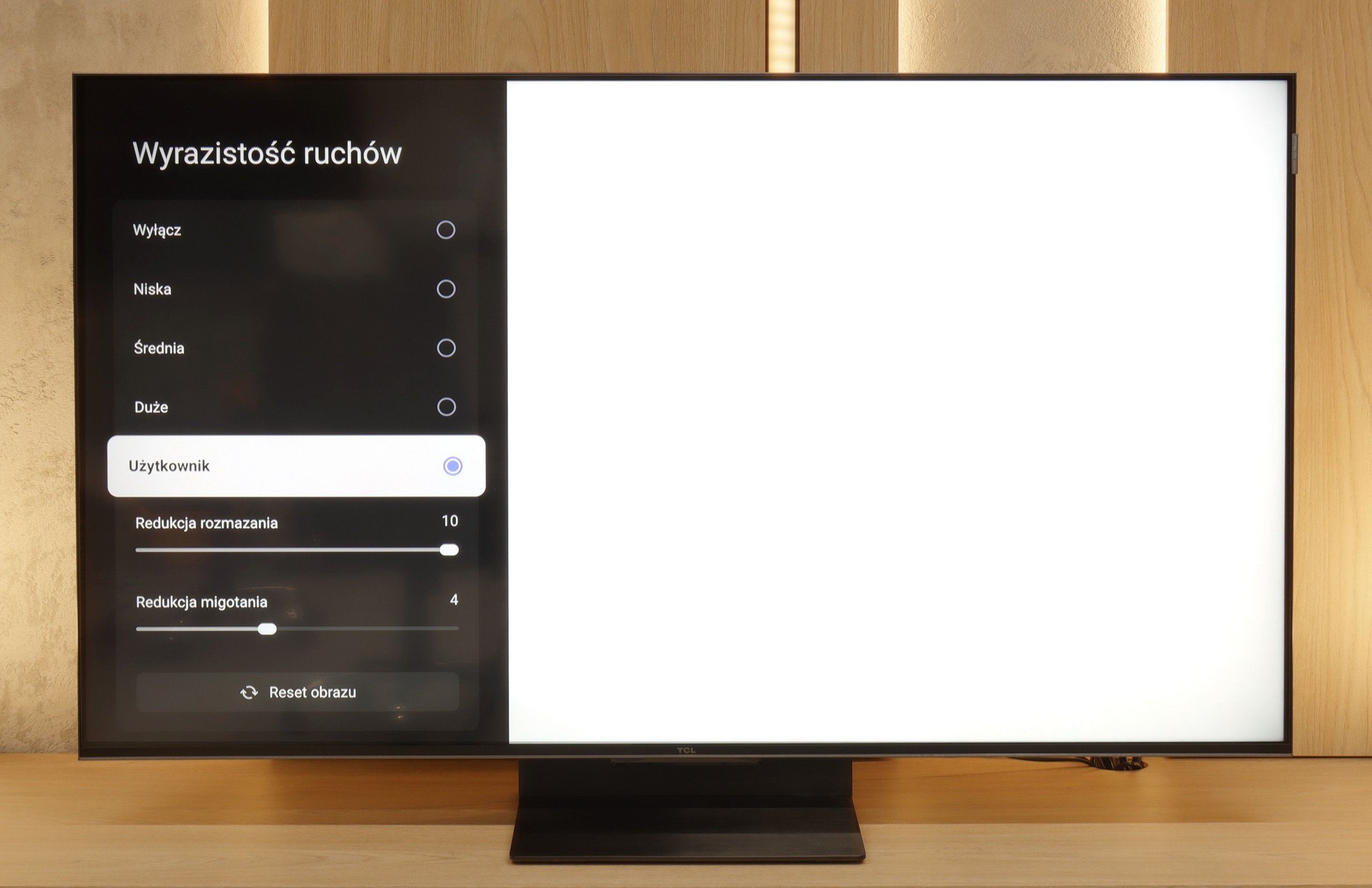
Blur (native resolution, maximum refresh rate):






Blur (BFI function enabled):



Smużenie ():
Smużenie (4K 144Hz):



Philips PML9009 is equipped with a panel that has a native refresh rate of 120 Hz. This is the essential minimum for watching all kinds of sports and is recommended for comfortable gaming in favourite titles on consoles or PCs. The manufacturer has prepared an effective system for improving the sharpness of moving images for those who do not like the characteristic stuttering of footage recorded at 24 fps or require a high level of motion fluidity, for example, when watching football matches. In the dedicated tab, we find the "Fluidity" slider, which helps eliminate stuttering, and "Motion Blur Reduction," which aids in increasing the sharpness of dynamic elements. This function works very well and granularly, meaning each setting has a real impact on the perception of motion. With such a set, every user will find their sweet spot. In the picture, we present our choice, which is a slight fluidity enhancement without the soap opera effect.
A matter directly related to motion is the pixel response time of the panel itself. The best in this regard are, of course, OLED panels, followed by IPS and ADS-based units, and finally, VA. Despite the overall good quality of the systems responsible for smoothing the image, the use of a VA panel carries consequences in the form of a black halo behind fast-moving objects. While this will not occur frequently in the tested television, it will be visible here and there.
The TCL C7K handles motion fluidity really very well. The matrix used in it offers a refresh rate of 144 Hz, which in itself suggests that this television is more than just a regular "60 Hz" panel. Furthermore – if we connect the C7K to a computer and set the resolution to Full HD. But we'll write more about this in the paragraph about gamers and PC collaboration. Returning to everyday use – both sports and films look very good here. Thanks to the fast panel and well-functioning motion smoothing, the C7K is great for watching matches, but also for movie screenings. In the menu, we find two sliders – motion blur reduction and flicker reduction – which allow us to adjust the fluidity effect to our own preferences. At lower settings, we get a more cinematic effect, with slight stuttering motion. At higher settings – the picture becomes more theatrical, fluid to the point of excess. Everyone has their own preferences – anyone can set it to their liking.
Console compatibility and gaming features
9.8/10
9.8/10
- ALLM
- VRR
- VRR range48 - 144Hz48 - 144Hz
- Dolby Vision Game Mode
- Correct implementation of HGIG
- 1080p@120Hz
- 1440p@120Hz
- 4K@120Hz
- Game bar

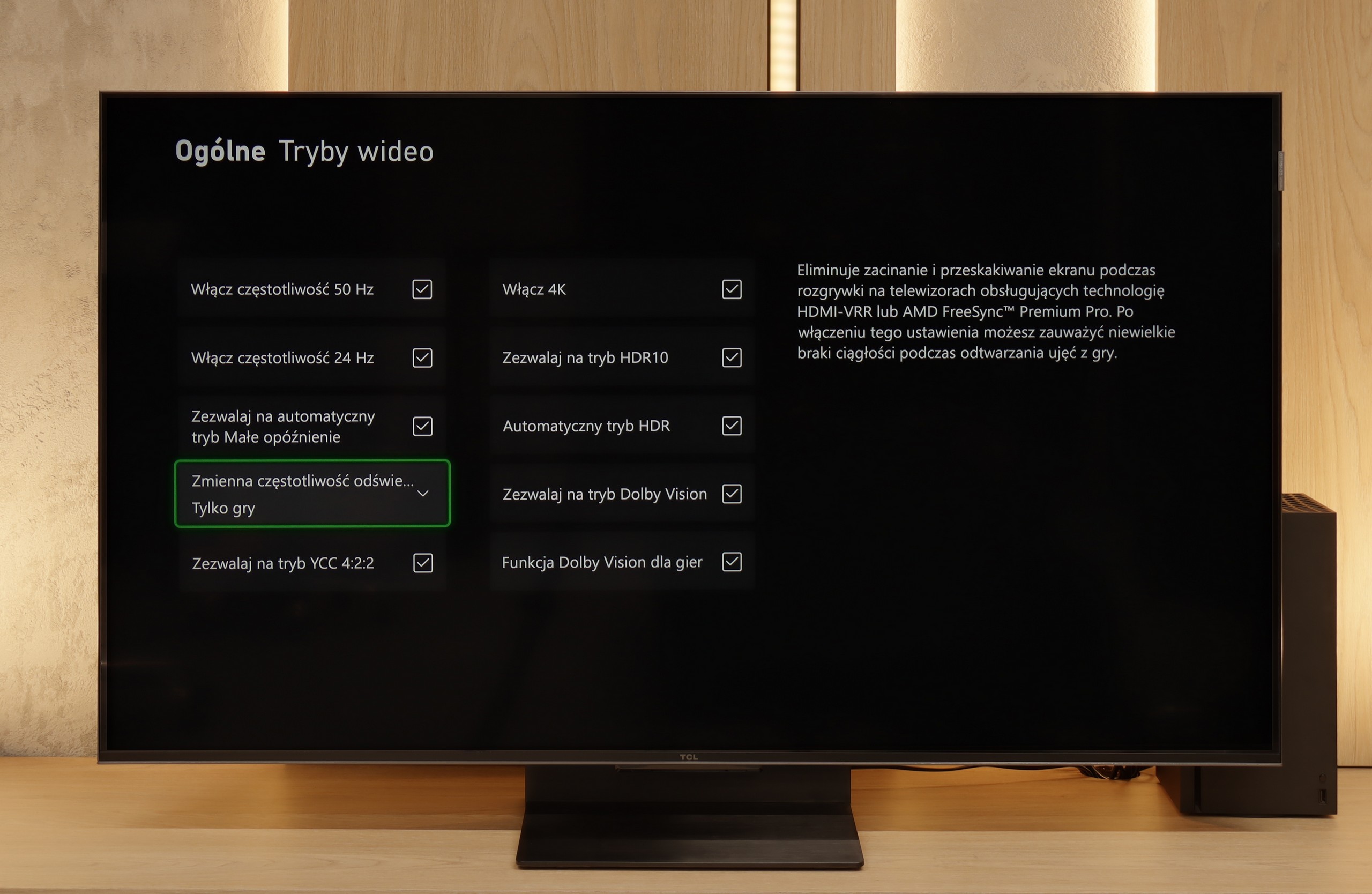

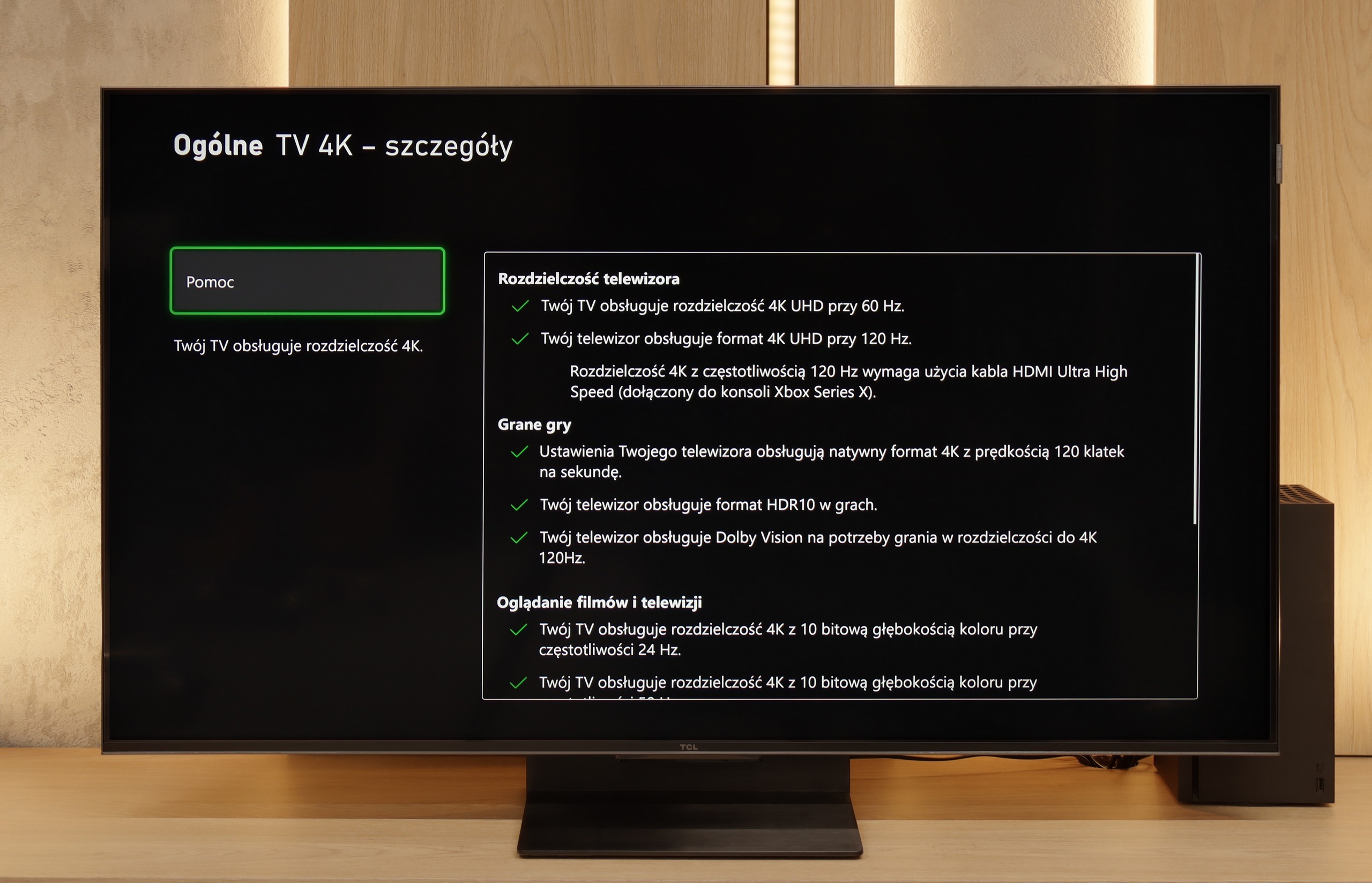

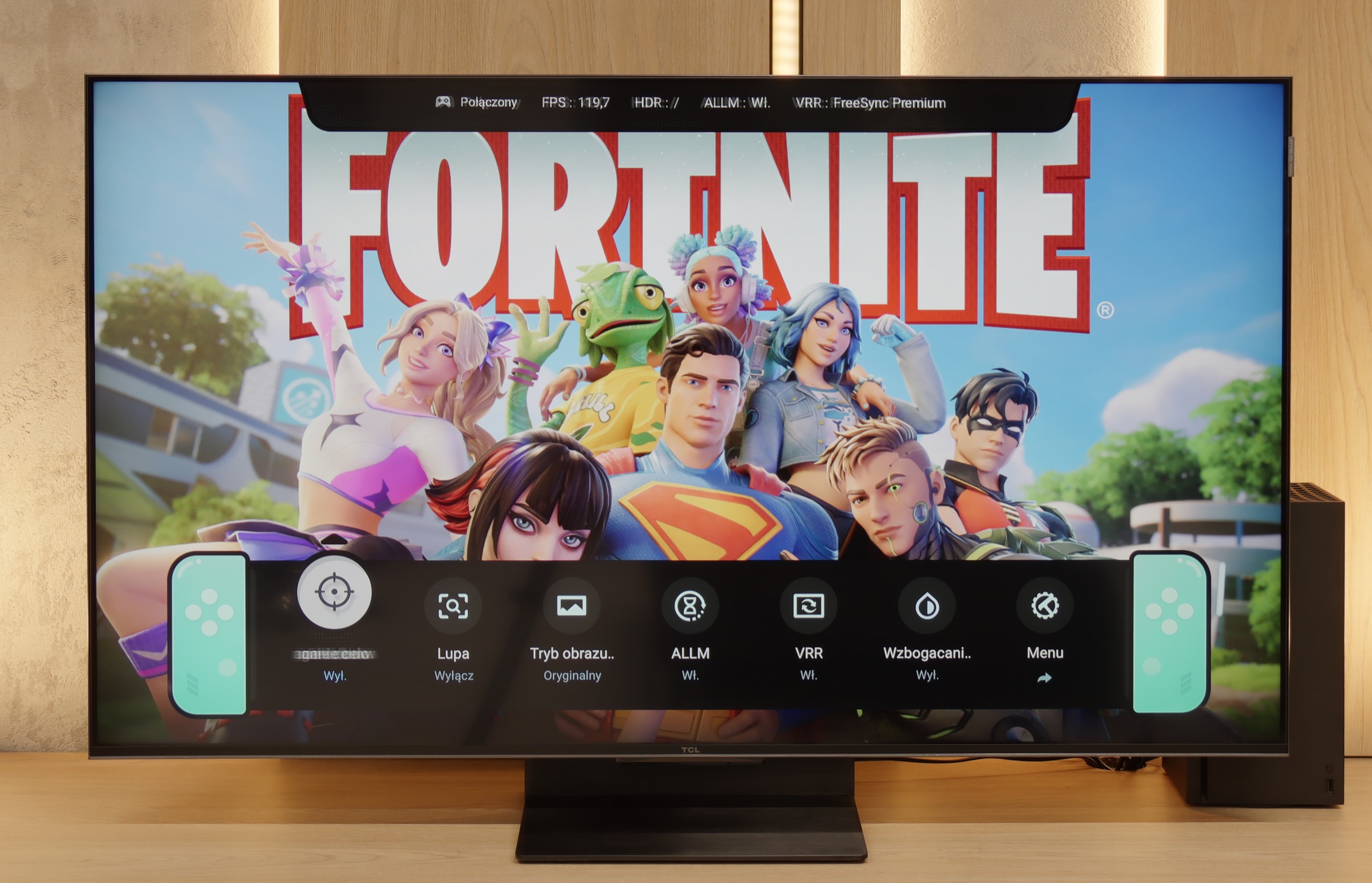

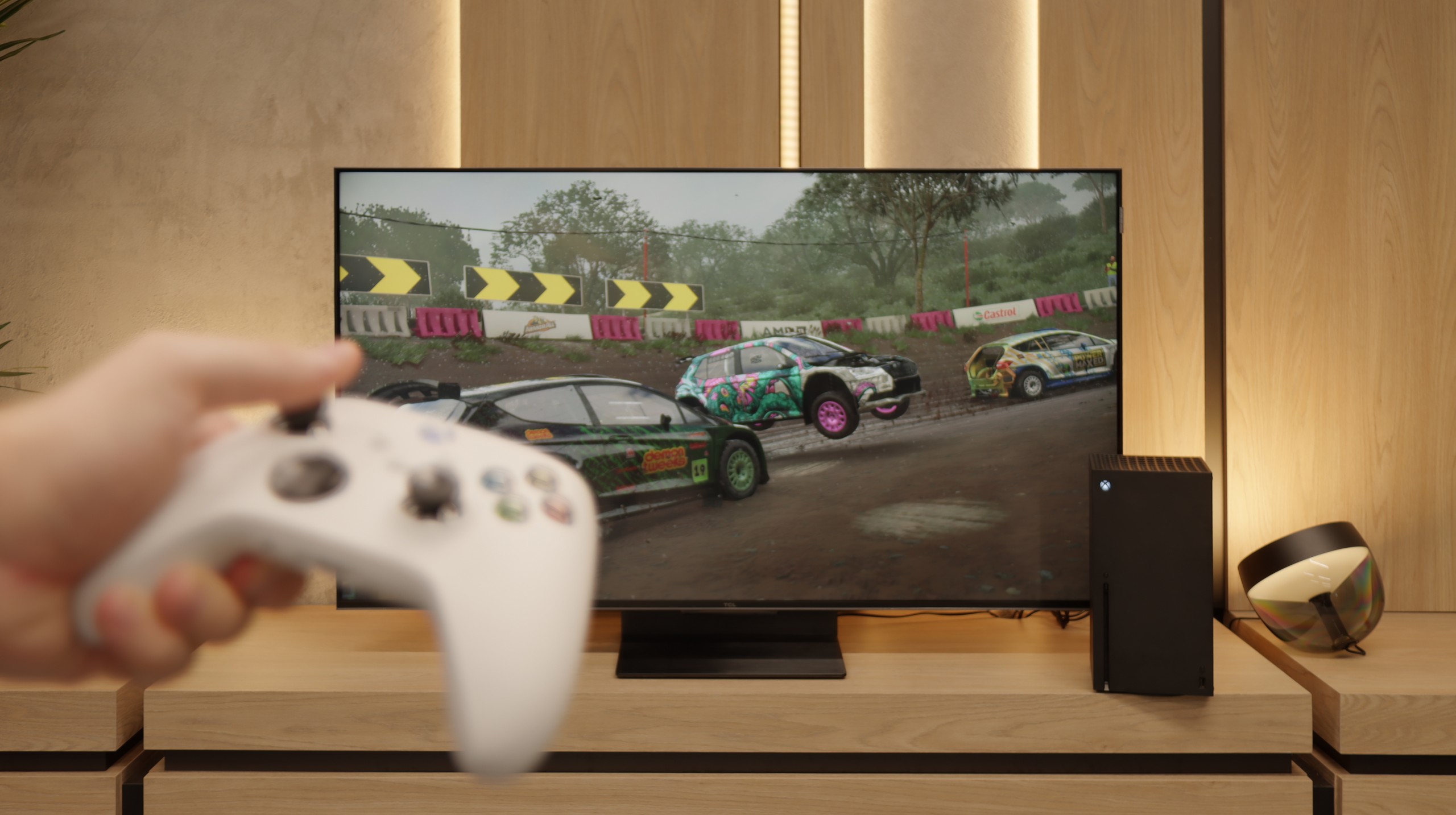
Philips PML9009, equipped with HDMI 2.1 ports at full bandwidth, supports all features dedicated to gamers. The most basic ones, such as VRR and ALLM, are a given, but G-Sync, FreeSync, and gaming in HDR Dolby Vision with low input lag are not. These features activate without any issues and during the tests conducted, they did not present any problems. Such preparation of the television is certainly a strong point and one can say that it is a unit dedicated to gamers. For more advanced users, we also mention that the PML9009 is equipped with an HGIG mode, which will be particularly felt by gamers, as there are still relatively few games supporting Dolby Vision. This mode primarily allows for the adjustment of HDR effects to the capabilities of the television on a special board, in order to avoid dimming or burning out the image.
The television additionally features a special menu - GameBar. This allows for editing the unit's settings "on the fly", without the need to exit the game. We will also find features such as enabling a crosshair or adjusting black levels for better visibility of opponents in shadows.
In a brief summary of this paragraph, the Philips PML9009 is a unit that will certainly capture the attention of gamers. Thanks to its versatility, it will allow playing any title in the highest quality without compromises. Especially since features such as VRR, ALLM, G-Sync, FreeSync, or gameplay in HDR Dolby Vision will enhance the immersion in the favourite title.
The TCL C7K is a television that on paper appears to be the dream equipment for gamers – and most importantly, it holds up in practice too. To start with good news: there are two full-bandwidth HDMI 2.1 ports, so we can easily connect both a console and a computer, taking advantage of all their capabilities. The panel itself supports a refresh rate of 144 Hz, which gives a significant advantage in dynamic games. There is also a complete set of gaming features: VRR (variable refresh rate), ALLM (automatic low-latency mode), and support for Dolby Vision in games. There is also the HGiG mode, which allows for HDR effects consistent with the creators' intentions. GameBar, an information bar for gamers. It works quickly, looks clear (like a Nintendo console👌), and shows what matters most: the current frame rate, VRR status, and even HDR parameters.
Input lag
9.6/10
9.7/10
SDR
HDR
Dolby Vision
The results of input lag measurements in Philips PML9009 are at a high level, regardless of the signal or resolution. All gamers will surely appreciate the manufacturer's efforts, as a game running at 4K120Hz with HDR has only 8 ms of latency, which is virtually unnoticeable even in online games. It is also worth mentioning the proper implementation of the gaming mode with Dolby Vision, which can be praised for a similar response time at 16 ms.
When it comes to delays, the C7K gives no reason for complaints. In games at 120 Hz, input lag is around 10 ms, which means the television responds really quickly. And interestingly – even in Dolby Vision mode, the result is very similar, which is not always the standard. Good job, TCL. At 60 Hz, the lag does increase a bit, but that's completely normal and affects virtually every television with a refresh rate of 120Hz and above. The most important thing is that everything still runs smoothly and there’s no feeling that something is not responding to our actions.
Compatibility with PC
8.6/10
8.4/10

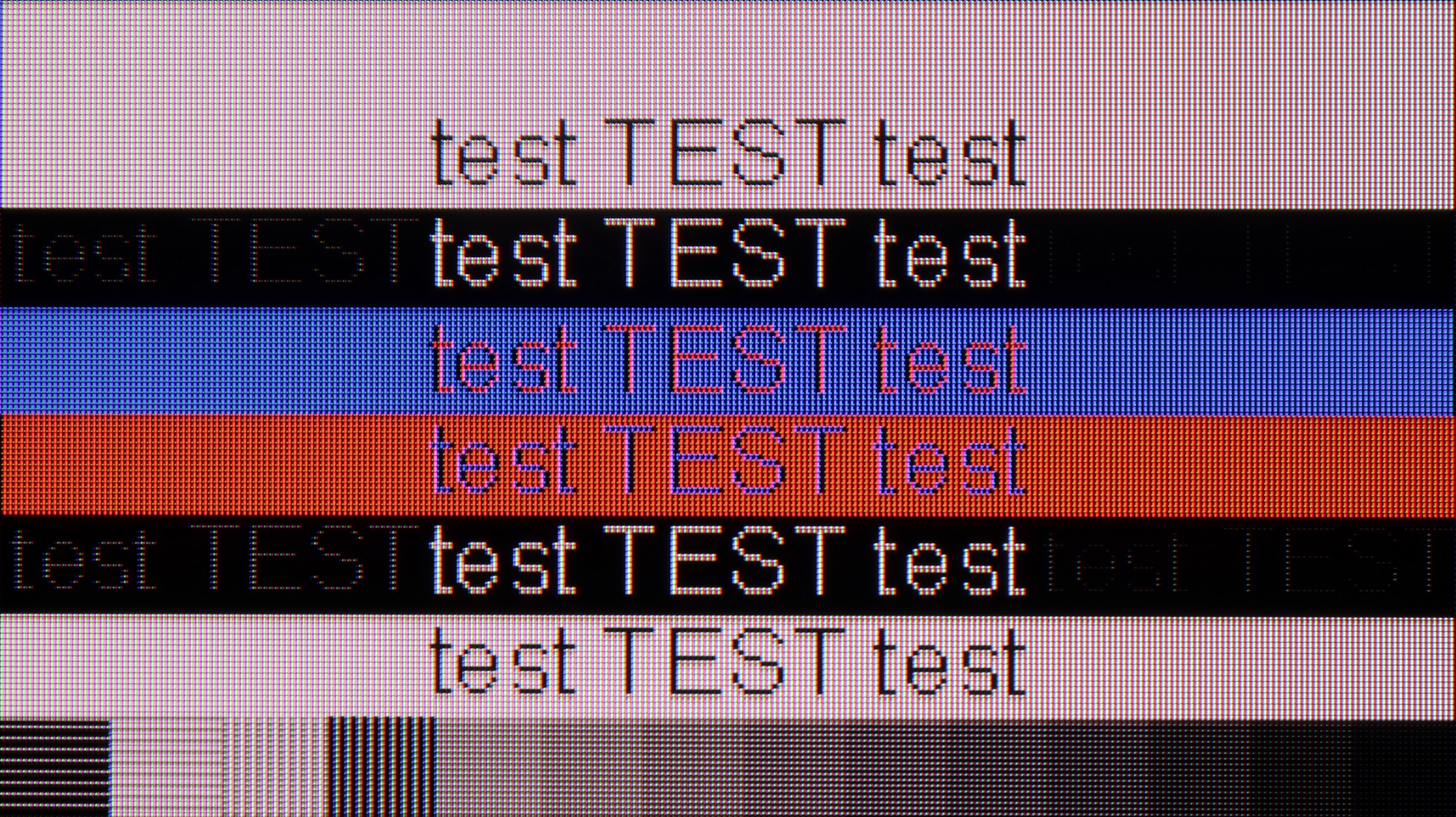
Just like in games, the tested Philips PML9009 performs excellently in daily tasks as well. Measured latency of 8 ms allows for virtually instantaneous response on the mouse-screen-eye line. The correct implementation of chroma 4:4:4 enables work with text without any issues thanks to sharp fonts. The subpixel arrangement of the matrix is BGR; however, this does not cause any discomfort when working on the Windows system. It may be different with other systems that might not be able to correctly convert the text.
If we are going to connect the C7K to a computer – especially for gaming – there is definitely a lot to play for. We have 4K at 144 Hz, which already sounds great, but if we lower the resolution, the television can even display up to 280 Hz. In e-sports, where every fraction of a second counts, this really makes a difference. On top of that, there is support for G-Sync and FreeSync, so regardless of which graphics card we have – the image will be smooth, without any stuttering or tearing.
However, if we plan to place the C7K on a desk and use it like a monitor, it’s a bit less "rosy." Yes, it supports chroma 4:4:4, so fonts should be sharp, but with very dark letters, there is slight blurriness and dimming of the edges. This is not something that immediately stands out during gaming or watching, but when working with text – it can be distracting. In everyday use – it’s probably nothing to worry about, but if we plan to place a 50-inch screen a meter from our face, it’s worth keeping this in mind.
Viewing angles
2.6/10
3/10
The commonly known drawback of VA panels that do not have an angle coating is their poor viewing angles. This is no different this time. Even with a slight deviation from the axis, the image becomes washed out, and the colours undergo significant degradation.
There are no surprises here – the C7K has classic viewing angles for a VA panel. That is: sitting directly in front – it’s excellent. The colours look good, the contrast is strong, everything is in place. But just shifting slightly to the side and it starts to get worse – the image loses saturation, blacks turn grey, and the overall impression diminishes a bit. So, if we plan to watch together with a few people or have a sofa that takes up half the living room – it’s worth seating everyone a bit more centrally. You can watch from the side, but don’t expect miracles – it’s simply a characteristic of VA panels.
TV efficiency during daytime
6.1/10
6.1/10




Matrix brightness
Average luminance SDR
TCL C7K / QM7K: 475 cd/m2
Philips PML9009 / 9019 / 9059: 564 cd/m2
As far as the brightness of the television itself in SDR material is good (let's face it, we watch films in the evening or in the dark), the suppression of reflections is at a rather average level. This is due to the satin finish of the panel, which is quite susceptible to all light sources and neither absorbs nor disperses them. However, it is worth noting that thanks to the fairly high brightness in SDR material, the television performs fairly well in bright rooms overall, and certainly better than a large number of OLED televisions.
Fortunately, the TCL C7K performs quite well in bright rooms. The applied panel has a satin finish that effectively suppresses reflections, which means we don't have to worry about lamp or window reflections even on sunny days. Importantly, the colours maintain their intensity and do not wash out, as can happen with weaker matte panels. In terms of brightness, the average for content like YouTube or regular television is slightly below 500 nits. This is not a record-breaking result – for example, the MQLED85 (C765) performs better in this regard. However, for everyday viewing during the day, it should work without major issues, provided we do not plan to place it opposite a south-facing window without curtains.
Details about the matrix
Subpixel Structure:

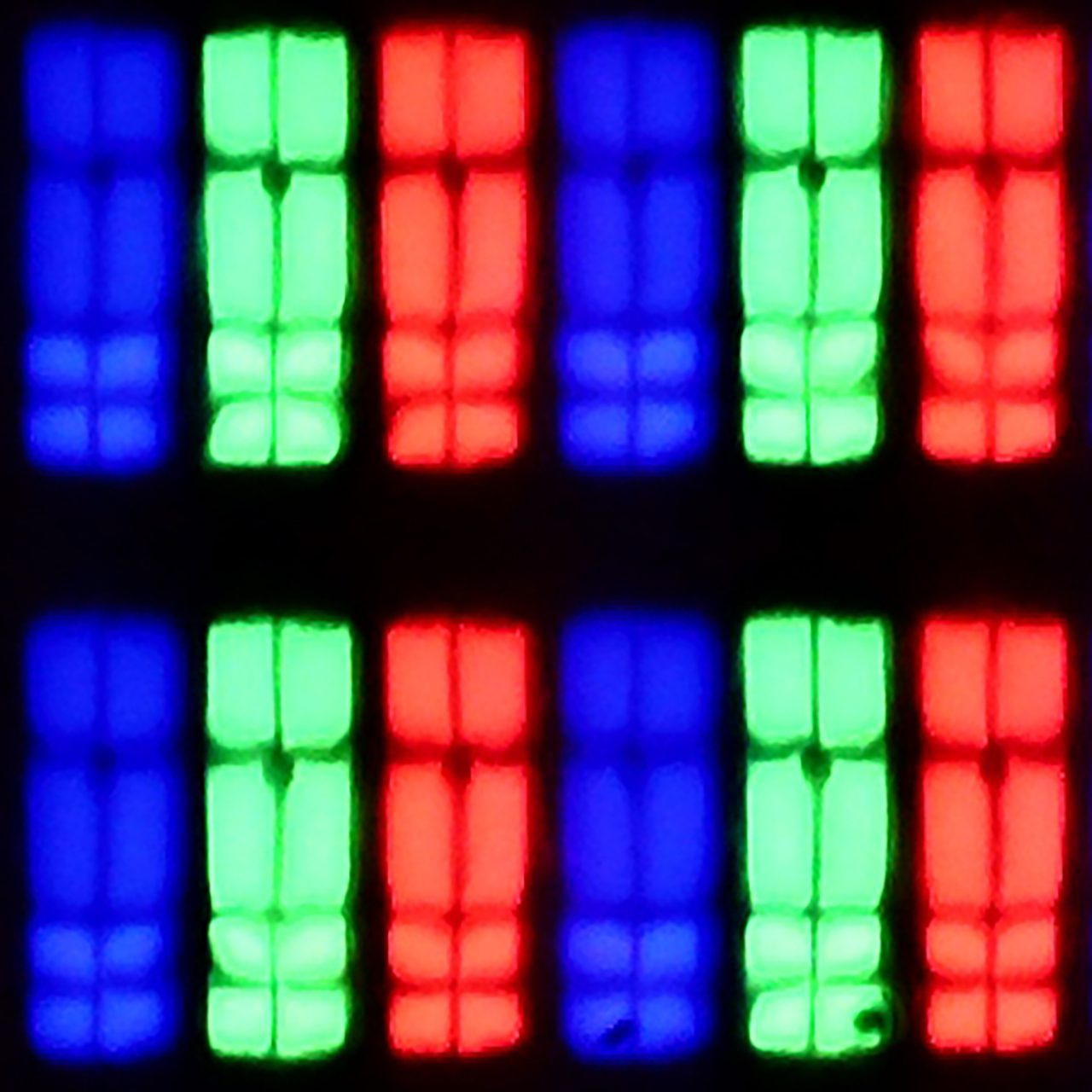
Panel uniformity:


Philips PML9009 / 9019 / 9059
TCL C7K / QM7K
TV features
6/10
7.7/10
- HDMI inputs0 x HDMI 2.0, 4 x HDMI 2.1 48Gbps2 x HDMI 2.0, 2 x HDMI 2.1 48Gbps
- OutputsToslink (Optical audio), eARC (HDMI), ARC (HDMI), Mini-Jack (Headphones)Toslink (Optical audio), eARC (HDMI), ARC (HDMI)
- Network InterfacesWi-Fi 2.4GHz, Wi-Fi 5GHz, Ethernet (LAN) 100MbpsWi-Fi 2.4GHz, Wi-Fi 5GHz, Ethernet (LAN) 100Mbps
- TV receptionDVB-T, DVB-T2, DVB-S, DVB-S2, DVB-CDVB-T, DVB-T2, DVB-S, DVB-S2, DVB-C
Classic features:
- Recording to USB (terrestrial TV)
- Recording programming
- Picture in Picture (PiP)
- RF remote control (no need to aim at the screen)
- Backlit remote control
- Teletext
- Audio only mode
- Possibility to connect Bluetooth headphones to the TV
- Possibility to simultaneously use Bluetooth headphones and the TV speaker
Smart features:
- AirPlay
- Screen mirroring (Windows Miracast)
- Wyszukiwanie głosowe
- Voice search in native language
- Ability to connect a keyboard and mouse



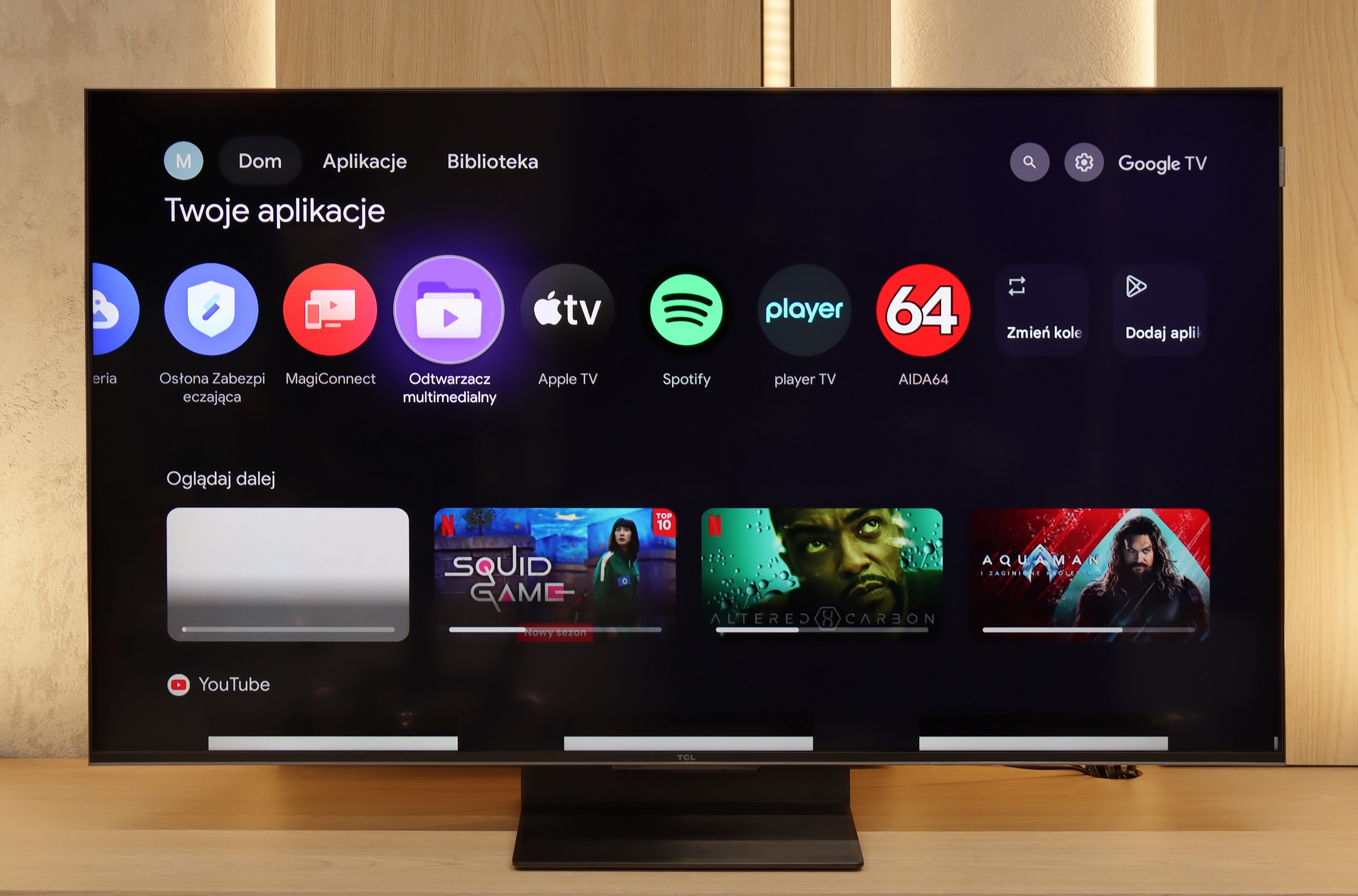
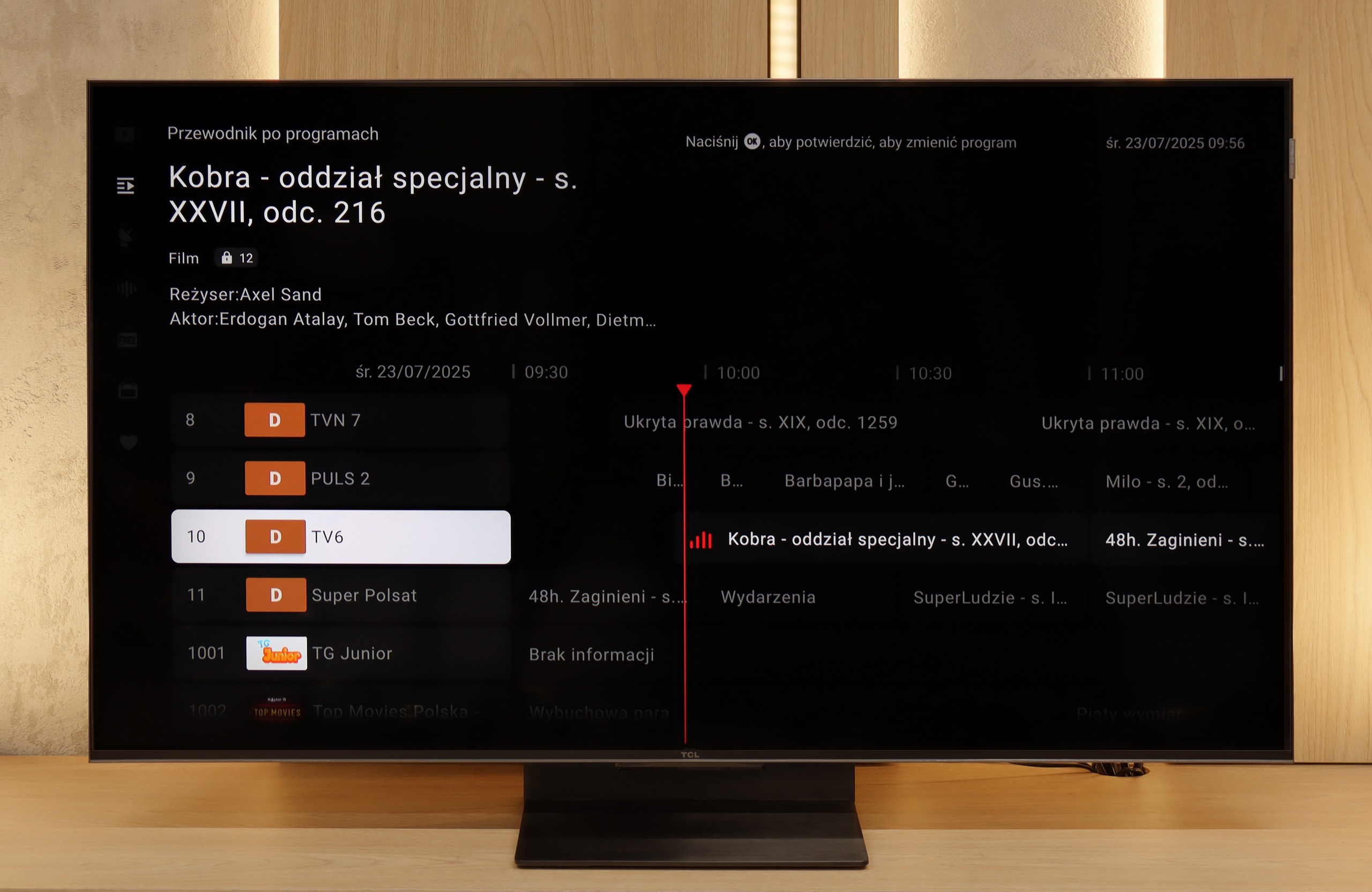
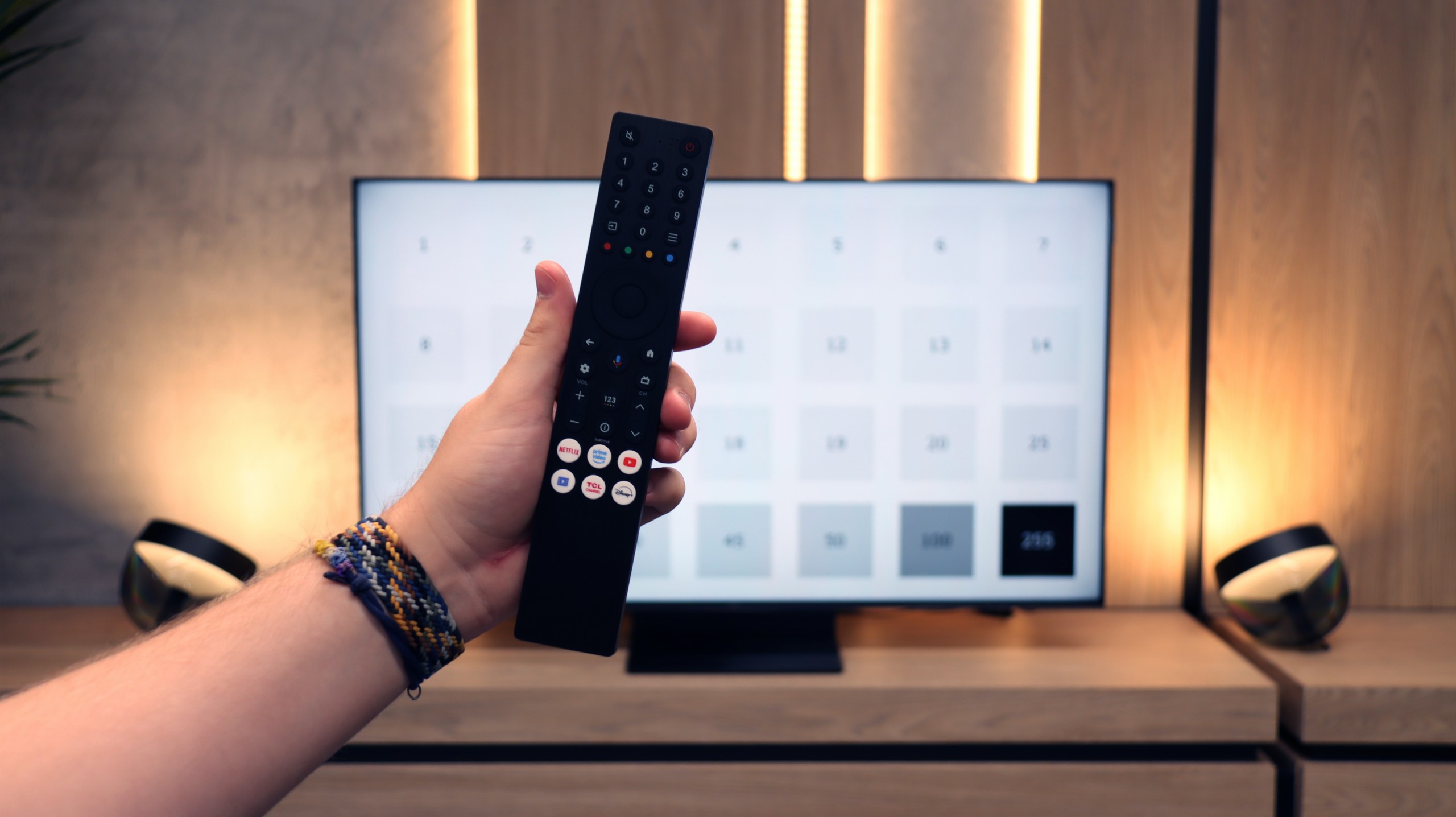
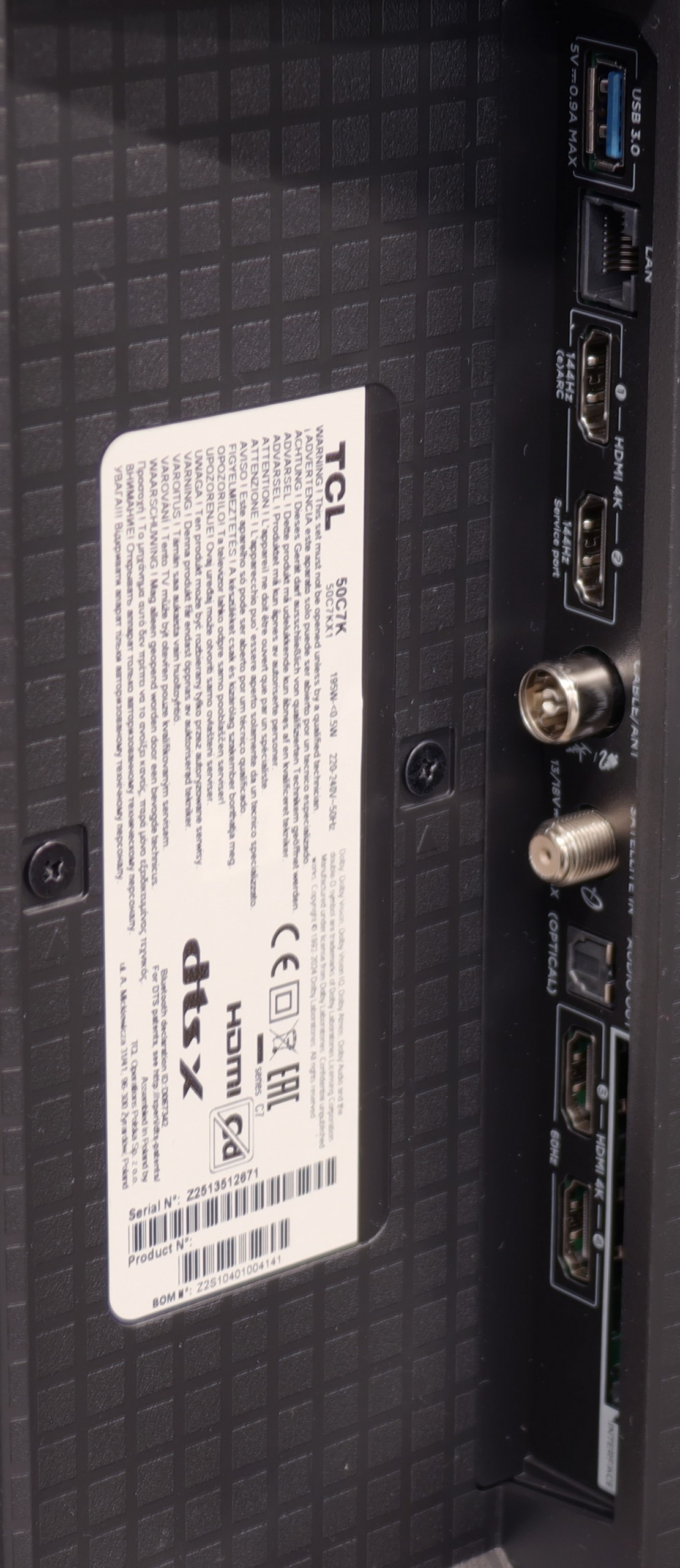
Before we move on to the software that controls the television, it is impossible not to mention the biggest distinguishing feature of the manufacturer's televisions. This is, of course, the multicoloured Ambilight backlighting, which is placed on the back of the device and displays colours tailored to what is happening on the screen, often allowing for an even greater sense of immersion. The operating system responsible for the television's functionality is Philips' proprietary system charmingly named TitanOs. It is definitely more closed and limited in terms of app resources compared to other televisions from the manufacturer that use the GoogleTV system. In addition to a lack of significant applications, its closed nature is also evident in another respect. We will not be able to perform such basic tasks as programming recordings or recording to USB. Those using Apple devices may also feel disappointed by the lack of AirPlay functionality, which allows for easy screen streaming. Fortunately, there is the option to connect a keyboard and mouse for easier navigation through the television menu. It's also worth mentioning that while the remote pairs via BT, it only works for voice selection in English. The rest operates via IR...
In summary: TitanOs has quite a few "buts," especially if we are aware users needing and using many streaming platforms. It is rather an option for those limiting themselves to the so-called holy trinity, which is Netflix, YouTube, and CDA.
SmartTV: GoogleTV
The greatest strength of the TCL C7K in everyday use is undoubtedly the Google TV system. Thanks to it, we have access to an almost endless library of applications, including some more niche ones that are often unavailable on other platforms. The built-in Google Assistant understands Polish, so we can easily ask what’s on TV, what the weather is like, and even issue a few voice commands to control the television. The presence of Chromecast and AirPlay, which work smoothly and make life easier, is also a plus.
User Functions
On the downside, the classic features are somewhat lacking. Of course, we have the basics – teletext, EPG, and the ability to connect headphones – but that’s about it. There is no USB recording feature or picture-in-picture (PiP) mode, which can still be found among competitors. It’s also worth remembering that Google TV in the TCL edition can sometimes have strangely translated parts of the menu or minor errors in the interface. These are not things that interfere with daily use, but those sensitive to details may notice them.
Playing files from USB
8.2/10
9.2/10
Supported photo formats:
Maximum photo resolution:


The default media player built into Philips PML9009 offers quite a wide range of capabilities, but it also has its limitations. It plays practically all video formats, except for .asf, which is rather uncommon. However, the issues are the lack of the H.265 HEVC codec at high bitrate and support for .sub files, which are quite popular. When it comes to photos, the player performs adequately, but it lacks support for some common resolutions and formats, such as HEIC, which is used on Apple devices. The player performs best with audio, where it can be faulted in no way. Unfortunately, due to system limitations, there is no possibility to expand its functions, which means we are left with what the manufacturer has prepared.
The built-in file player in the TCL C7K performs really very well. It supports most of the most popular audio and video formats, so if we want to quickly plug something in from a USB drive and play it – there should be no problem. Of course, as is usually the case, we can find some minor shortcomings – not every exotic codec will work (Apple's HEIC), not all subtitles will be perfectly synchronised (txt.). However, the biggest advantage of this television comes to the rescue, namely Google TV. Thanks to access to the Google Play store, we can easily install an alternative player, e.g. VLC, and then no files will be a concern for us.
Apps
6.2/10
9.6/10














































Sound
6.7/10
7/10
- Subjective sound quality:6.7/107/10
- Dolby Digital Plus 7.1:
- Dolby True HD 7.1:
- Dolby Atmos in Dolby Digital Plus (JOC):
- Dolby Atmos in Dolby True HD:
- DTS:X in DTS-HD MA:
- DTS-HD Master Audio:
To begin with, it is worth noting that sound quality is a subjective matter. The built-in audio system in Philips PML9009 stands out for its clear treble, but the bass is rather flat and significantly worse than in competing models in the same price range.
To be honest, we didn’t expect much from the sound of the 50-inch version of the C7K model. Typically, in such sizes, it’s hard to get anything more than thin, flat sound. But here – a pleasant surprise. The audio proved to be really enjoyable, with good clarity and even a slightly discernible bass. This is probably related to TCL's new collaboration with the Bang & Olufsen brand, which is a novelty for 2025. Whether the C7K actually uses the original transducers from the Danish premium brand – we cannot confirm. But the end result still deserves a thumbs up. For a television without a soundbar – it sounds quite pleasant.


